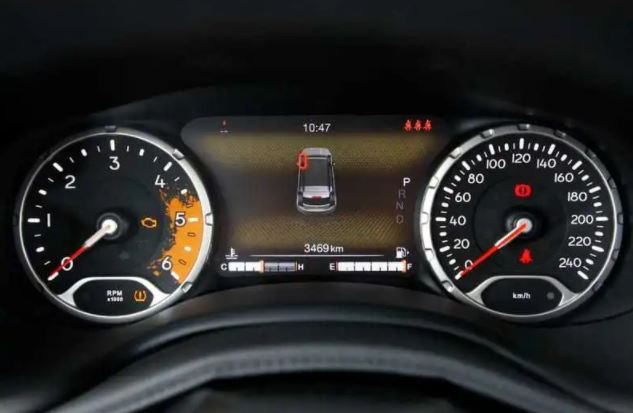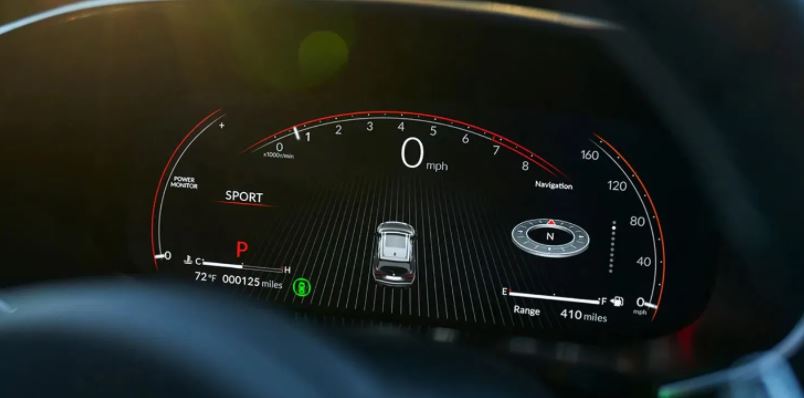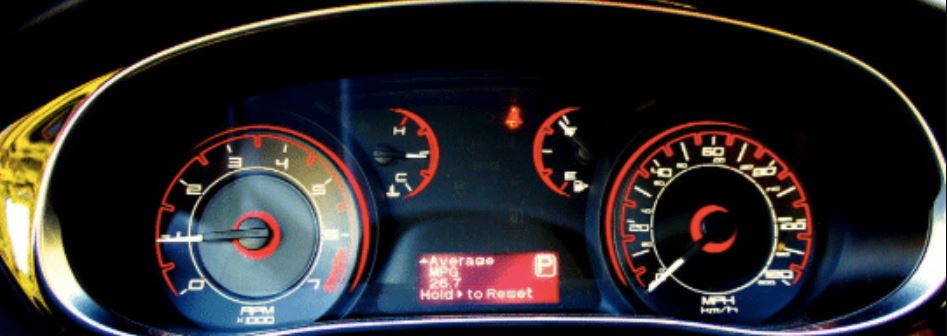
Does the speedometer work if you change to larger tires?
One of the main causes of an incorrectly calibrated speedometer is if you change the tire size of your vehicle. Larger tire sizes can cause the speedometer to read the speed slower than usual, and smaller tires will make the speedometer think the car is traveling faster than it actually is.
To counteract this, you can recalibrate your speedometer, to ensure that it is reading the correct speed in which you are driving.
Larger tire sizes can cause the speedometer to read the speed slower than usual, and smaller tires will make the speedometer think the car is traveling faster than it actually is.
To counteract this, you can recalibrate your speedometer, to ensure that it is reading the correct speed in which you are driving.
How to Calibrate a Speedometer for Larger Tires
 In order to calibrate your speedometer, you must first consider whether it is an electronic speedometer or a mechanical one, as both require different methods.
In order to calibrate your speedometer, you must first consider whether it is an electronic speedometer or a mechanical one, as both require different methods.
Electronic Speedometer
To recalibrate an electric speedometer, the method is quite simple. First, you will have to determine the distance of the test drive that you will need to completely recalibrate your speedometer. You can check this in your owner’s manual or vehicle documentation. Once this is done, you must press down the calibration button on your car’s speedometer, and start the vehicle before releasing the button. Then, you can press the button again and begin to drive the distance that the speedometer requires in order to recalibrate it.
If you have finished driving the correct distance, then you can press the calibration button again, and the speedometer should calibrate itself based on the recent test drive, with the new tire size.
Once this is done, you must press down the calibration button on your car’s speedometer, and start the vehicle before releasing the button. Then, you can press the button again and begin to drive the distance that the speedometer requires in order to recalibrate it.
If you have finished driving the correct distance, then you can press the calibration button again, and the speedometer should calibrate itself based on the recent test drive, with the new tire size.
Mechanical Speedometer
If you have added larger tires to your vehicle, or for instance a Chevy, you will have to recalibrate the speedometer. To recalibrate a mechanical speedometer, the process is slightly trickier than an electronic one. First of all, you will have to open the vehicle’s hood and locate your transmission. Once you have done this, you must unscrew the cable for the speedometer from the transmission’s tail shaft, using a wrench to unscrew the body that holds the gear housing. Then, you must take out the plate so that two gears are exposed. There should be a drive gear inside of your transmission, along with an attached cable to the gear. Now, you must count exactly how many teeth the drive gear has, and it is best to write the number down. You must then multiply this number of teeth by the axle ratio, and again by the tire revolutions per mile. Once you have discovered this number, then you will have to divide it by 1001. This should give you an accurate reading for the teeth you need on your drive gear. From there, you can purchase the right driven gear for your vehicle, ensuring you have purchased the right one for your vehicle’s make and model. You can then remove the old driven gear from the speedometer cable and clip the new one into place. Ensure that the speedometer cable is securely attached to its original position so that it can function perfectly.Will I have to adjust the speedometer for larger tires on my Chevy?
With your speedometer, there is a small sensor that works to detect how quickly your wheels are turning. This will determine how fast you are going, and relate the information back to the speedometer. As most speedometers are programmed to the factory settings of the car from when it was manufactured, if you change the wheels for larger tires on a Chevy, you will need to adjust the speedometer. Larger tires on your Chevy will actually spin much slower than regular-sized or smaller tires. A larger tire will also cover more ground every time it rotates than the normal tire, and so this will affect your speedometer.What size tires can I fit on my Chevy Silverado 1500?
This will depend on the model of the vehicle, the year of release, and engine modification. Chevy’s can typically be fitted with much larger tires for better performance and traction on the road. For instance, it is most likely that the biggest tire you can fit would be a 265/70 on your Chevy Silverado. However, it is vital that you calibrate your speedometer to your new tire size.How to tell if my speedometer needs checking
The easiest and simplest way to find out if your speedometer is working accurately is by using a highway stopwatch. This will determine if your speedometer needs recalibrating. To do this, you will have to use a highway that has mile markers. You will also need someone in the passenger seat to help you out. Using a stopwatch, you can ask them to time how long it takes for you to travel one mile, whilst maintaining your speed. Once this is done, you can divide 3600 by the number of seconds it took for you to travel one whole mile. This will give you a correct speed reading. You can then compare this with your speedometer reading to determine whether it is functioning correctly with your tires and traveling speed.What is the quickest way to recalibrate my speedometer?
 The fastest and easiest way to recalibrate your speedometer is with a calibrator tool. This can quickly update your speedometer when new, larger tires are added.
For instance, you can find one here:
The fastest and easiest way to recalibrate your speedometer is with a calibrator tool. This can quickly update your speedometer when new, larger tires are added.
For instance, you can find one here:
Can a Warn Winch Help with Calibrating Speedometer for Larger Tires on a Chevy?
Certainly, a Warn winch plays a pivotal role when recalibrating the speedometer to accommodate larger tires on a Chevrolet. However, for the best results, it’s vital to explore the top Warn winch recommendations specific to your vehicle to ensure accurate installation and functionality.

